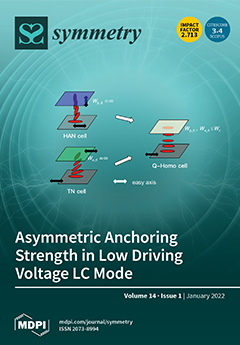Open AccessReview
The CMS Magnetic Field Measuring and Monitoring Systems
by
Vyacheslav Klyukhin, Austin Ball, Felix Bergsma, Henk Boterenbrood, Benoit Curé, Domenico Dattola, Andrea Gaddi, Hubert Gerwig, Alain Hervé, Richard Loveless, Gary Teafoe, Daniel Wenman, Wolfram Zeuner and Jerry Zimmerman
Cited by 2 | Viewed by 2086
Abstract
This review article describes the performance of the magnetic field measuring and monitoring systems for the Compact Muon Solenoid (CMS) detector. To cross-check the magnetic flux distribution obtained with the CMS magnet model, four systems for measuring the magnetic flux density in the
[...] Read more.
This review article describes the performance of the magnetic field measuring and monitoring systems for the Compact Muon Solenoid (CMS) detector. To cross-check the magnetic flux distribution obtained with the CMS magnet model, four systems for measuring the magnetic flux density in the detector volume were used. The magnetic induction inside the 6 m diameter superconducting solenoid was measured and is currently monitored by four nuclear magnetic resonance (NMR) probes installed using special tubes at a radius of 2.9148 m outside the barrel hadron calorimeter at ±0.006 m from the coil median
XY-plane. Two more NRM probes were installed at the faces of the tracking system at
Z-coordinates of −2.835 and +2.831 m and a radius of 0.651 m from the solenoid axis. The field inside the superconducting solenoid was precisely measured in 2006 in a cylindrical volume of 3.448 m in diameter and 7 m in length using ten three-dimensional (3D) B-sensors based on the Hall effect (Hall probes). These B-sensors were installed on each of the two propeller arms of an automated field-mapping machine. In addition to these measurement systems, a system for monitoring the magnetic field during the CMS detector operation has been developed. Inside the solenoid in the horizontal plane, four 3D B-sensors were installed at the faces of the tracking detector at distances
X = ±0.959 m and
Z-coordinates of −2.899 and +2.895 m. Twelve 3D B-sensors were installed on the surfaces of the flux-return yoke nose disks. Seventy 3D B-sensors were installed in the air gaps of the CMS magnet yoke in 11
XY-planes of the azimuthal sector at 270°. A specially developed flux loop technique was used for the most complex measurements of the magnetic flux density inside the steel blocks of the CMS magnet yoke. The flux loops are installed in 22 sections of the flux-return yoke blocks in grooves of 30 mm wide and 12–13 mm deep and consist of 7–10 turns of 45 wire flat ribbon cable. The areas enclosed by these coils varied from 0.3 to 1.59 m
2 in the blocks of the barrel wheels and from 0.5 to 1.12 m
2 in the blocks of the yoke endcap disks. The development of these systems and the results of the magnetic flux density measurements across the CMS magnet are presented and discussed in this review article.
Full article
(This article belongs to the Section
Physics)





